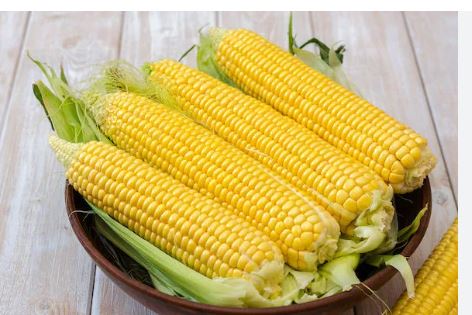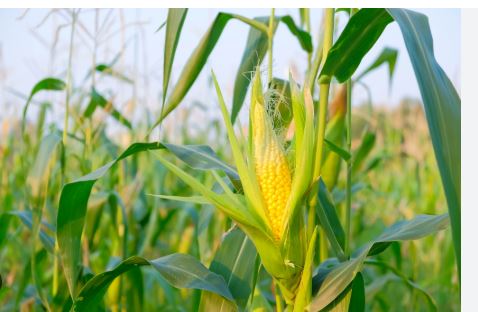
Corn, scientifically known as Zea mays, belongs to the Poaceae family, commonly called the grass family, which includes wheat, rice, and barley. It’s classified under the subfamily Panicoideae and the tribe Andropogoneae, closely related to sorghum and sugarcane. As an annual monocot, it features a single seed leaf and a fibrous root system. The genus Zea includes several wild species, but Zea mays is the only domesticated one, divided into subspecies and varieties based on kernel traits (e.g., Zea mays indentata for dent corn). Its reproductive structure—tassels (male) and ears (female)—is unique among cereals, relying on wind pollination.
Corn originated in Mesoamerica, specifically Mexico, around 10,000 years ago, domesticated from a wild grass called teosinte (Zea mays ssp. parviglumis). Indigenous peoples, likely the Olmec or early Mayan cultures, selectively bred teosinte for larger cobs and kernels, transforming it into a staple crop by 5,000 BCE. By the time Columbus arrived in 1492, maize had spread across the Americas, from Chile to Canada, with diverse varieties adapted to local conditions. Europeans introduced it globally in the 16th century, and it became a vital food source in Africa, Asia, and Europe, evolving further through crossbreeding and modern genetics.
Today, corn is grown on every continent except Antarctica, with the United States, China, Brazil, and Argentina as top producers. In the U.S., the Midwest “Corn Belt” dominates, yielding dent corn for feed and industry. China cultivates it in the northeast for food and fodder, while Brazil focuses on both grain and silage in its tropical climates. Africa grows diverse types, like white maize in South Africa for mealie pap, and India produces it in monsoon-fed regions. Cultivation varies—irrigated fields in arid zones, rain-fed plots in the tropics, and high-altitude terraces in the Andes—supported by hybrids tailored to climate and soil.
Corn thrives in USDA Hardiness Zones 4-11, though it’s grown as an annual, not a perennial, so zones reflect frost-free growing seasons rather than winter survival. Zones 4-8 (e.g., U.S. Midwest) suit spring planting with 100-150 frost-free days, while Zones 9-11 (e.g., tropics) allow year-round cultivation with adequate water. Ideal temperatures range from 60°F to 95°F (15°C-35°C), with Zones 6-9 being optimal for most commercial varieties. Cold Zone 4 requires early-maturing hybrids, while hot Zone 11 demands heat-tolerant strains.

Types of Corn
Dent Corn (Zea mays indentata)
- Origin: Developed in the U.S. in the 19th century by crossing flint corn with softer Native American varieties.
- Characteristics: Kernels have a soft, starchy center with a hard outer layer, forming a “dent” on top when dried. Typically yellow or white.
- Common Use: The backbone of industrial agriculture—used for livestock feed, ethanol production, and processed foods like corn syrup, meal, and grits.
Flint Corn (Zea mays indurata)
- Origin: One of the oldest types, cultivated by Native Americans across the Americas long before European contact.
- Characteristics: Hard, glossy kernels with minimal soft starch, often in vibrant colors (red, blue, purple). Low moisture content makes it durable.
- Common Use: Specialty foods like polenta, hominy, and cornmeal; also popular as a decorative corn (e.g., “Indian corn”).
Sweet Corn (Zea mays saccharata)
- Origin: A natural mutation of field corn, refined in the U.S. in the 18th century for its sugary taste.
- Characteristics: High sugar content due to a recessive gene that slows starch conversion. Soft, juicy kernels harvested immature, in yellow, white, or bicolor varieties.
- Common Use: Eaten fresh (boiled, grilled), canned, or frozen as a vegetable.
Popcorn (Zea mays everta)
- Origin: Traces back over 5,000 years to Peru, where ancient popcorn kernels have been found in archaeological sites.
- Characteristics: Small, hard kernels with a tough hull and starchy core that pops when heated. Shapes include “mushroom” (round) and “butterfly” (winged).
- Common Use: A beloved snack food, popped and seasoned for eating.
Indian Corn
- Origin: A cultural term for multicolored flint corn varieties grown by Indigenous peoples of the Americas for centuries.
- Characteristics: Kernels in a rainbow of colors (red, blue, yellow, etc.), hard and shiny like flint corn.
- Common Use: Primarily ornamental (e.g., fall decorations), though it can be ground into flour or used in traditional dishes.
Field Corn
- Origin: A modern agricultural category encompassing dent and flint corns, bred for mass production in the U.S. and beyond.
- Characteristics: Varies by subtype (dent or flint), but generally tough, starchy, and not sweet. Focus is on high yield, not flavor.
- Common Use: Animal feed, industrial products (biofuel, plastics), and bulk food processing.
Waxy Corn
- Origin: First identified in China in the early 20th century, later bred elsewhere for its unique starch properties.
- Characteristics: Kernels are high in amylopectin (a sticky starch), giving a waxy look and feel. Usually opaque and less crystalline.
- Common Use: Food thickeners (sauces, gravies), tapioca substitutes, and industrial adhesives.
Pod Corn (Zea mays tunicata)
- Origin: An ancient, primitive form of maize, possibly resembling early domesticated corn from Mexico, linked to teosinte.
- Characteristics: Each kernel is wrapped in its own husk (glume), making it impractical for large-scale harvest. Small, irregular ears.
- Common Use: Rarely grown; mainly used for genetic research or as a historical curiosity.
Blue Corn
- Origin: Cultivated by Indigenous peoples of the Southwestern U.S. and Mexico (e.g., Hopi, Navajo) for centuries.
- Characteristics: Deep blue or purple kernels due to anthocyanins. Can be flint or dent, with a slightly nutty flavor.
- Common Use: Traditional foods like tortillas, tamales, and blue corn chips; also valued for its antioxidant content.
High-Amylose Corn
- Origin: Developed in the 20th century through selective breeding in the U.S. for industrial and health applications.
- Characteristics: Kernels contain 50-70% amylose (a type of starch), making them dense and less palatable fresh.
- Common Use: Resistant starch for dietary fiber, biodegradable plastics, and specialized food products.
Glass Gem Corn
- Origin: Bred in the U.S. by Cherokee farmer Carl Barnes in the late 20th century, blending Native heirloom varieties.
- Characteristics: Translucent, jewel-like kernels in a dazzling array of colors (pink, green, purple, etc.). A flint type.
- Common Use: Decorative displays and artisan crafts; can be ground into colorful flour or cornmeal.
Baby Corn
- Origin: Not a distinct variety but a product of early harvesting, popularized in Southeast Asia (e.g., Thailand) for cuisine.
- Characteristics: Tiny, immature ears (often sweet or field corn), 2-4 inches long, tender and mildly sweet with edible cobs.
- Common Use: Stir-fries, salads, pickling, or as a crunchy garnish in Asian dishes.
Bloody Butcher Corn
- Origin: An heirloom from the U.S., likely developed in the 19th century by Appalachian farmers.
- Characteristics: A dent corn with deep red to burgundy kernels, sometimes streaked with lighter shades. Tall plants, striking appearance.
- Common Use: Ground into cornmeal for baking (e.g., cornbread with a reddish tint) or used decoratively.
Hopi Blue Corn
- Origin: Cultivated by the Hopi people of Arizona for over a thousand years, a specific strain of blue corn.
- Characteristics: Slate-blue kernels, flint-like texture, rich in anthocyanins. Smaller ears than commercial corn.
- Common Use: Sacred in Hopi ceremonies; used for blue tortillas, piki bread, and mush.
Oaxacan Green Corn
- Origin: An ancient flint corn from Oaxaca, Mexico, grown by Zapotec and Mixtec peoples.
- Characteristics: Emerald-green kernels due to unique pigmentation, hard and glossy.
- Common Use: Ground into masa for green tortillas or tamales; also ornamental.
Cherokee White Eagle Corn
- Origin: A Cherokee heirloom from the Southeastern U.S., pre-dating European settlement.
- Characteristics: White kernels with occasional blue “eagle” markings, a flint-dent hybrid. Tall stalks.
- Common Use: Cornmeal, hominy, or ceremonial use; prized by seed savers.
Reid’s Yellow Dent
- Origin: Developed in the 1840s by Robert Reid in Illinois, a foundational U.S. dent corn strain.
- Characteristics: Bright yellow, deeply dented kernels, high-yielding and uniform.
- Common Use: Livestock feed and early corn breeding programs; still grown by heritage farmers.
Chalqueño Corn
- Origin: From the Chalco region of Mexico, grown for centuries by local farmers.
- Characteristics: Large, white kernels, often flint or dent, with a robust, starchy texture.
- Common Use: Masa for tortillas and tamales in Central Mexico; adaptable to high altitudes.
Arikara Yellow Corn
- Origin: Cultivated by the Arikara tribe along the Missouri River (North Dakota) since at least the 18th century.
- Characteristics: Yellow-orange flint kernels, drought-tolerant, shorter growing season.
- Common Use: Cornmeal, soups, or parched corn; historically a trade staple.
Painted Mountain Corn
- Origin: Bred in Montana by Dave Christensen in the 1970s from Native American varieties.
- Characteristics: Multicolored flint kernels (red, yellow, blue), cold-hardy, and high in protein.
- Common Use: Survival food (flour, meal), animal feed, or ornamental.
Maiz Morado (Purple Corn)
- Origin: Originated in Peru, grown in the Andes for millennia by Indigenous peoples.
- Characteristics: Deep purple-black kernels, flint type, rich in anthocyanins.
- Common Use: Chicha morada (a sweet drink), desserts, and natural food coloring.
Hickory King Corn
- Origin: An old Southern U.S. dent corn, popularized in the late 19th century.
- Characteristics: Large, flat, white or yellow kernels, sturdy plants resistant to wind.
- Common Use: Hominy, grits, and cornmeal; ideal for hand-grinding.
Tennessee Red Cob Corn
- Origin: An heirloom from Tennessee, likely bred by farmers in the 19th century.
- Characteristics: White dent kernels on distinctive red cobs, sweetish flavor when young.
- Common Use: Cornmeal, livestock feed, or fresh eating in early stages.
Strawberry Popcorn
- Origin: A Native American popcorn variety, refined in the U.S. for its unique look.
- Characteristics: Tiny, ruby-red kernels resembling strawberries, hard and poppable.
- Common Use: Gourmet popcorn (small, crunchy pops) and decorative displays.